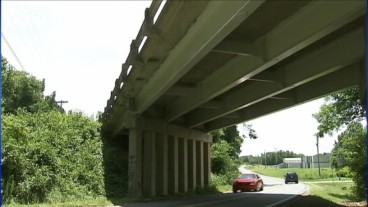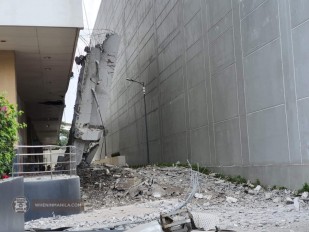New Report Finds 63,000 Structurally Deficient Bridges Across U.S.

A new report released by the American Road & Transportation Builders Association states there are 63,000 structurally deficient bridges in the United States. If one were to line up each structurally deficient bridge end-to-end and drive across, it would take a person 25 hours driving at 60 miles per hour to travel across them. Over 250 million drivers cross these bridges daily. As the start of the 2015 fiscal year approaches (October 1), more and more people and interest groups are putting pressure on Congress to take action to avoid insolvency in the Highway Trust Fund.
The American Road & Transportation Builders Association (ARTBA) analyzed the 2013 National Bridge Inventory database released to by the United States Department of Transportation to come up with the data in their report. ARTBA was established in 1902 and is the “consensus voice” of the U.S. transportation design and construction industry in the Nation’s Capital. In order to be labeled structurally deficient, a bridge must be scored 4 points or lower on a nine point scale by bridge inspectors. Being scored structurally deficient does not mean a bridge is in immanent danger of collapsing. It means that the bridge will require significant maintenance to stay open, and often weight restrictions are placed on the bridge. Roughly ten percent of the 600,000 bridges in the United States are structural deficient. Another statistic worth pointing out is the average age of the structurally deficient bridges in the U.S: 42 years old.
According to the report, the 250 most heavily crossed deficient bridges are on urban interstate highways.Pennsylvania (5,218), Iowa (5,043), Oklahoma (4,227), Missouri (3,357) and California (2,769) have the highest number of structurally deficient bridges; Nevada (36), Delaware (56), Utah (117), Alaska (133) and Hawaii (144), the least. Also, at least 20 percent of the bridges in four states—Pennsylvania (23 percent), Rhode Island (22 percent), Iowa (21 percent) and South Dakota (21 percent)—fall in the structurally deficient category.
The Highway Trust Fund has provided $89 billion in bridge construction work in the last 10 years. It helps fill the gap between project costs and state and local funding levels. The Highway Trust Fund is funded by revenue from a federal gasoline tax. The tax, however, has not been increased since 1993 and has failed to keep pace with rising construction costs. The annual road building costs have been up to $20 billion more than the gas tax revenue in recent years. People are calling on congress to take action to fix the Highway Trust Fund and end this avoidable crisis. There have been recommendations to raise the gas tax and add more tolling across the country. Most infrastructure reform advocates would like to see a 5- or 6-year funding bill. A long-term bill will be needed to alleviate the backlog of infrastructure projects.
Want to read more like this story?

U.S. DOT survey reveals: 61,000 bridges in need of structural repairs
Apr, 07, 2015 | NewsA recently released study by the U.S. Department of Transportation (U.S. DOT) National Bridge Invent...

U.S. DOT Warns of Need For Spending on Bridges and Roads
Mar, 05, 2014 | NewsThe United States Department of Transportation released its biennial conditions and performance repo...

Pennsylvania To Use P3 Contracts To Fix Aging Bridges
Jan, 24, 2014 | NewsPennsylvania Department of Transportation plans to replace 500 bridges in the state starting in 2015...

Six Injured in Brent Spence Bridge Crash
Aug, 05, 2014 | NewsSix people were injured this weekend in Cincinnati, Ohio when a car fell off the southbound deck of...

Historic Oregon Bridge For Sale
Aug, 15, 2014 | NewsIf anyone is in the market for purchasing an old bridge here is your chance. Multnomah county i...

Brent Spence Bridge Project at Crucial Point
Feb, 24, 2014 | NewsOhio Department of Transportation Director Jerry Wray announced on Friday that the Brent Spence Brid...

Types of bridges
Jun, 01, 2023 | EducationArch Bridge An arch bridge is a type of bridge that uses a curved, semi-circular structure, kno...

Tappan Zee Bridge Funding Questions Remain
Mar, 27, 2014 | NewsWhile the first three piles for the Tappan Zee Bridge in New York have been completed, there are sti...

Repairs needed for Washington State Bridges and Highways
Apr, 14, 2021 | NewsWashington State infrastructure is in need of maintenance. Engineers and lawmakers are trying to...
Trending

Spectacular interchanges around the world

Eshima Ohashi bridge in Japan designed for the brave!

Building partially collapses in Philippines: 2 people injured

Concrete Component Design Using STAAD.Pro

Precast and prefabricated concrete structures: What is the difference?



